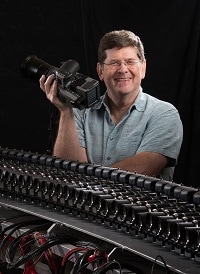Wrist Surgery
A Slip of the Wrist
 Last February, Gregory "Almont" Green of Medway coasted down a hill on his sled, lanterns lighting the way as he enjoyed a winter night with his kids, ages 12 and 16. They had spent three days building the path, which led into the woods. After all the fun they'd had on the sled run, Almont never expected to slam into a tree with his wrist. "I knew it was dislocated right when it happened and I couldn't move it," recalls Almont, 58. "It was one of the most painful experiences I've had. We went to the ER and the staff took one look at me and knew I was in trouble. I must have been white as a sheet." The Milford Regional emergency department (ED) staff evaluated his injury and gave him pain killers, which temporarily helped to relieve the throbbing pain. Meanwhile, around midnight, the staff phoned Dr. Louis M. Jurist, founder of New England
Last February, Gregory "Almont" Green of Medway coasted down a hill on his sled, lanterns lighting the way as he enjoyed a winter night with his kids, ages 12 and 16. They had spent three days building the path, which led into the woods. After all the fun they'd had on the sled run, Almont never expected to slam into a tree with his wrist. "I knew it was dislocated right when it happened and I couldn't move it," recalls Almont, 58. "It was one of the most painful experiences I've had. We went to the ER and the staff took one look at me and knew I was in trouble. I must have been white as a sheet." The Milford Regional emergency department (ED) staff evaluated his injury and gave him pain killers, which temporarily helped to relieve the throbbing pain. Meanwhile, around midnight, the staff phoned Dr. Louis M. Jurist, founder of New England
Hand Associates and Chairman of the Medical Executive Committee at
Milford Regional. Dr. Jurist's orthopedic surgery practice specializes in hand, wrist, elbow and shoulder conditions. The practice has three hand surgeons who operate a full-time clinic and are available to assist in the emergency
department 24/7.
"Anytime there is a hand or wrist problem, they know they can call us," says Dr. Jurist. "I've been around long enough to see the evolution of the hospital over the past 25 years and it has become a premier community hospital. They're really doing the right thing all the way around. The ED physicians are excellent and they do a great job assessing and taking care of problems. They told me that they'd had a wrist dislocation that was very unusual. Because the staff is so good and I knew they were describing it appropriately, I knew I'd better come in."
According to Dr. Jurist, Almond's injury turned out to be a dislocation of the distal radio-ulnar joint at the wrist, the joint that is responsible for rotation. The fact that it was dislocated in the palmar (or forward) direction made it even rarer. He decided to see if the joint could be popped back into place without requiring a middle-of-the-night visit to the operating room. Almond, who received IV sedation and local anesthesia, doesn't remember the procedure. "I was told it made such a loud noise that it echoed down the halls and all the nurses and patients heard it," Almond says. "When I came to from the sedation, the pain was instantly gone. It was an amazing relief. I didn't need any more pain medication after that."
For the next few weeks, Almond's wrist was kept immobilized by a cast. However, once he started using his wrist again, he couldn't close his fingers into a fist and pain returned. Dr. Jurist ordered a MRI, which revealed a cartilage tear that had resulted from the trauma. After therapy and a brace failed to remedy the problem, Almond underwent arthroscopic surgery at Milford Regional. "I made two incisions less than a half inch each on top of his wrist," Dr. Jurist explains. "The camera goes in one and the instruments go in the other. I took out a flap of cartilage, shaving and trimming it back so it didn't flop around and cause irritation. We also tightened a couple ligaments that were loose. It took about thirty minutes."
Once again Almont woke up from a procedure to find that his wrist felt much better; only this time, it was for keeps. He went home in a splint and soon after changed to a cast. Once his wrist healed, Almont joined a gym and focused on building his strength. "When I started, I could barely lift two pounds with my right arm," he says. "Now I can do 25 pound curls and don't have any pain. I really appreciate my right arm now...you don't appreciate how much you use both arms until something happens. The care I received was top notch. I don't see how it could have gone any better than it did."
Read more about Louis Jurist, MD